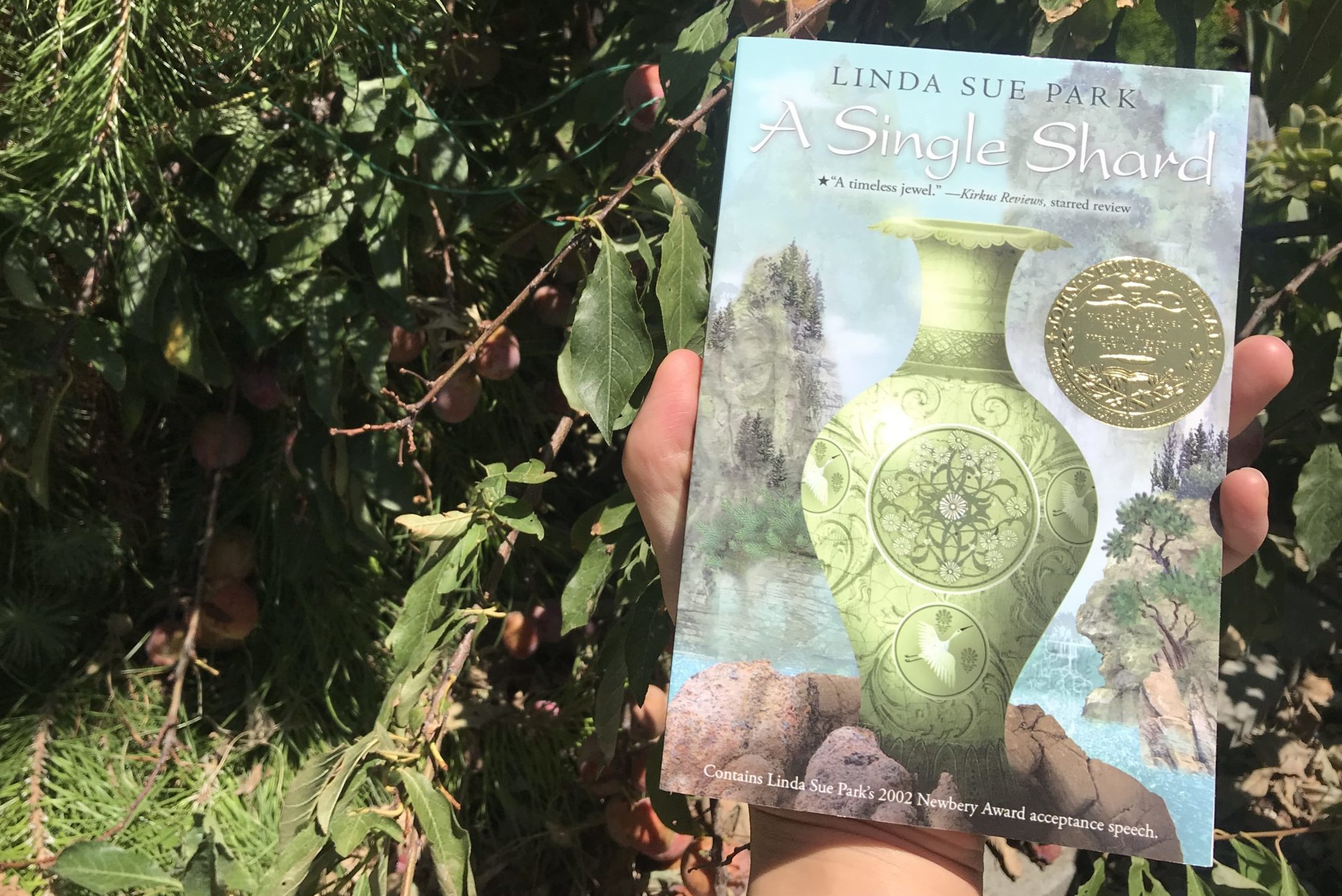I’ve been picking up more adult-oriented books lately (lots of romances by Jasmine Guillory and a few thrillers by Megan Miranda), but I’m still reading kid lit! I went on a lovely afternoon excursion yesterday, checking out local mom and pop shops and picking up some books from the library. (I also had the best chicken shawarma from this little Middle Eastern market. I digress.) Although it’s had its fair share of critiques, my latest obsession is the Junji Ito Collection anime. My boyfriend let me borrow his Crunchyroll pass last year, so I got the chance to see Junji’s art gallery at the San Jose Convention Center. Anyway, it’s a shame that I didn’t get *too* into his manga back then! My library haul included Frankenstein and Smashed. I’m keen on buying Uzumaki and Tomie as well. Might do a few one-off blogs about Junji’s work — what do you think?
Anyway, another part of my little trip included picking up Linda Sue Park’s A Single Shard from a local bookstore. I felt in the mood to read something short and light. The winner of the 2002 Newbery medal, A Single Shard wasn’t as light as I’d expected, but it proved to be an excellent read.
A Single Shard takes place in 12th century Korea in Ch’ulp’o, a village known for its celadon pottery (which you might recognize from its lovely greenish gray glaze). We get a glimpse into the life of Tree-ear, a young orphan boy who lives with his adoptive father Crane-man under a bridge. Tree-ear wants to one day create beautiful pottery. He goes under the tutelage of the village’s finest potter, Min, after breaking Min’s box. Equal parts curmudgeonly and brilliant, Min is quite reluctant to teach Tree-ear new skills. Driven by intense curiosity, Tree-ear nonetheless devotes himself to learning things from his teacher, so much that he even embarks on a difficult journey to get Min commissioned by a royal emissary.
A Single Shard is a short book without a grandiose plot, but that doesn’t make it insignificant. Park fills her novella with elegant writing. She generously produces strong imagery by illustrating the process of celadon pottery and the simple pleasures of village life. Yes, this is the ultimate embodiment of cottagecore. Yet the book never feels too self-indulgent. Every description drives the narrative forward, whether it’s revealing something about the characters or serving as an overarching symbol. Park depicts the callouses on Tree-ear hands to show his tenacity. The single shard stands in for hope and excellence in the face of a broken world. The author draws us deep into this world — while she explains words here and there for cultural context, these moments do not intrude with the narrative’s flow whatsoever.
I’d be remiss not to mention how Park richly develops her characters. She astutely tunes into feelings such as shame, disappointment, and hope, inviting her readers to sit with these intricate emotions. Each relationship is also laced with nuance, from the softness with which Ajima cares for Tree-ear to the considerate love that Crane-man gives Tree-ear. Park so delicately layers emotions into her characters that I sometimes forget that I’m reading a children’s book. Mature readers will definitely have a deeper appreciation for the themes of grief and love.
In A Single Shard, Park molds a slice-of-life story into a rare treasure, deftly expanding emotional stakes and creating beloved characters. It’s easy to devour this book in an entire sitting, and it’d be two or three hours well spent.
You can purchase A Single Shard through Bookshop.org. (This is an affiliate link.)
Grade: 7-12
Published: 2001
